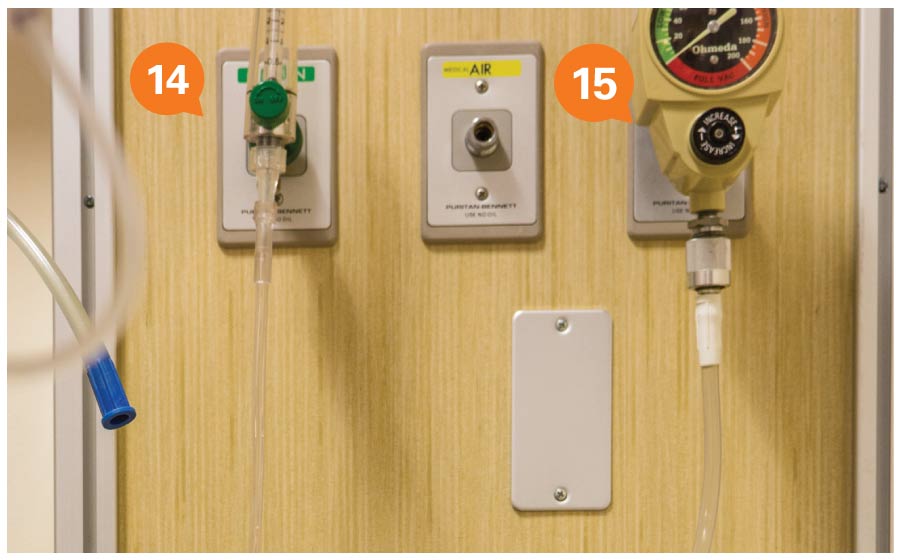Room of Errors
UVA Medical Center works to cut down medical errors by creating them
Linwood Adttoidx is in rough shape.
The 39-year-old Iraq War veteran was admitted to UVA Medical Center five days ago with acute pancreatitis. Since then, he’s developed renal failure, respiratory distress, hyperglycemia and a fever.
But his biggest hurdles to recovery are medical errors.
He’s been pumped with medicines he doesn’t need, had misconnected tubes stuck into his body and been placed at risk for pneumonia and falling out of bed.
Good thing he’s just a mannequin.
Linwood is part of a new training tool UVA nursing professor Dr. Julie Haizlip is using to get everyone from interns to nurses to therapists thinking more about reducing medical errors, which some studies have found are the third leading cause of death in America.
Haizlip and her team make Linwood part of their so-called “Room of Errors.” They set the mannequin in a patient room, carefully add as many as three dozen medical mistakes and then invite medical staff to discover all the errors they can find in no more than 10 minutes.
“What sets this apart from similar types of training at other teaching hospitals is the complexity of the errors,” Haizlip says. “We bring teams from diverse areas of care in so every member hears the range of errors that can exist and non one get’s get tunnel vision.”
Here’s a sampling of the errors medical teams encounter when they walk into a room that’s been prepared by Haizlip’s team.

- Drugs shown here interact negatively with home meds (see #16)
- IV nutrition is for the wrong patient

- Nasogastric tube not properly positioned
- Suction tube is connected incorrectly
- Central line not necessary and is not dressed correctly
- Dresssing on patient’s side is soiled and needs changing

- Patient is lying flat, creating a risk for aspiration pneumonia
- No ID bracelet or fall-risk bracelet
- Roll of tape under patient's leg can cause bedsore
- Wrong securement device on leg
- Bed should not be so high because patient is a fall risk
- Urinary bag needs to be below bed level and color should remind staff of recent kidney failure
- Bedside commode obstructs access to patient and should not be in room because patient is a fall risk
[14 and 15 below]
- Home medication should not be in room
- Open food and drink should not be on tray table
- Controlled medicine and used syringe should not be on tray table
- Needle box is full and should not be on tray table
- Glove box is empty
- Hand sanitizer is empty

- O2 is not flowing
- Suction is not properly connected

- Patient is allergic to these antibiotics
- Drug is wrong concentration
